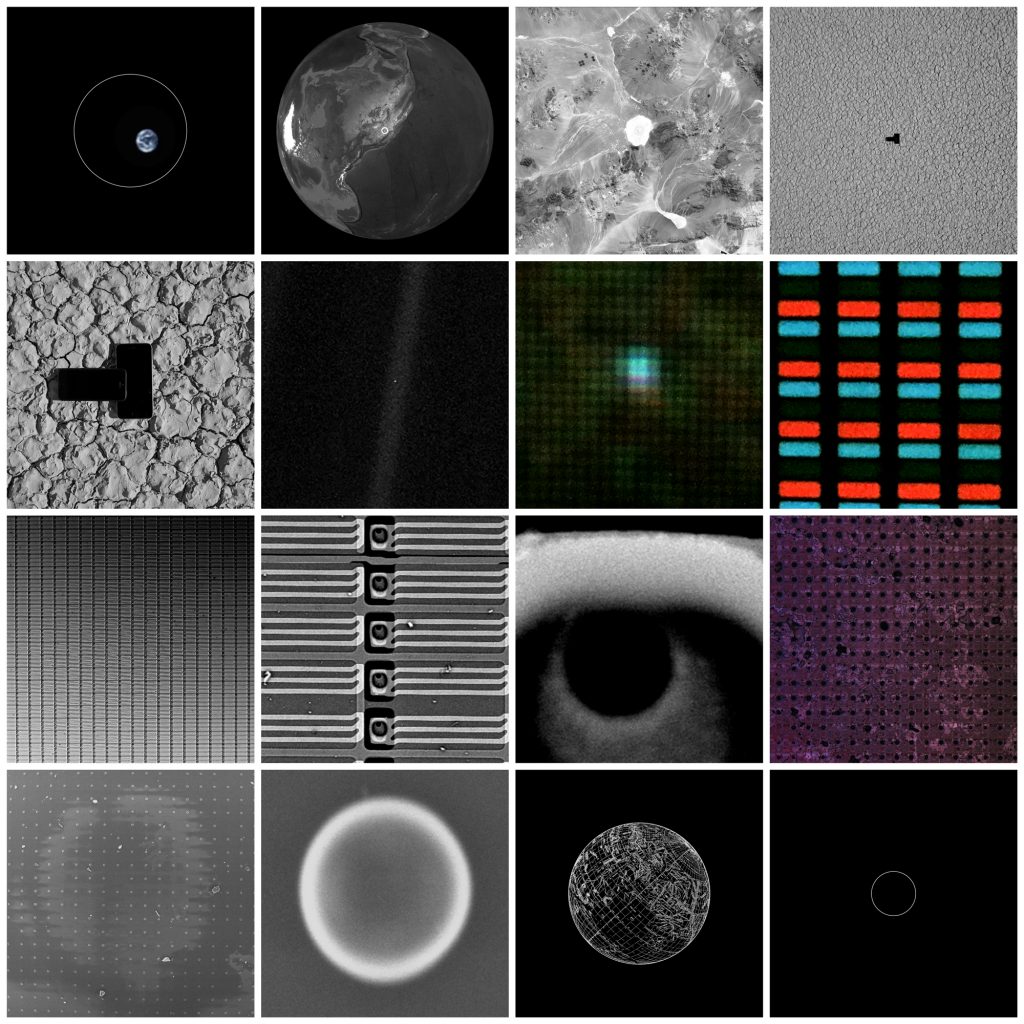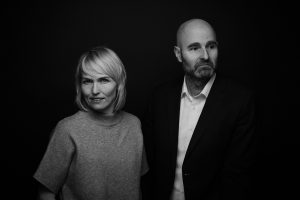Meta.Morf 2018 – A Beautiful Accident
BULL.MILETIC (NO/US) – Trøndelag Centre for Contemporary Arts / March 22 – April 15 /
Curators: TSSK Art Board: Randi M. Brockmann, Ingun Myrstad, Jon Benjamin Tallerås.
ZOOM BLUE DOT (1990-2018)
On February 14, 1990, before permanently turning off its cameras, NASA’s Voyager 1 briefly turned towards Earth to snap one last picture. Shot from a distance of 4 billion miles, our planet appears as a pale blue dot, suspended in a sunbeam. Taking Pale Blue Dot (1990) as an anchor point, this project addresses the concept of scale as an epistemic shift in our awareness brought on by the Anthropocene.Bull.Miletic

The recent surge of aerial imaging technologies such as satellites and drones has prompted scholarly discussions on what has come to emerge as a new visual paradigm.
Pointing to the technologies of surveillance, tracking and targeting, such as drones and satellites, this development is accompanied by a growing amount of remote sensing and visualization systems “that give us operational representations of the planet” (Parikka 2016). The exponential growth of ortophotomapped representations of Earth through cinematized data sets produces affective scalable models of our planet far from the vibrant ecosystem that in Buckminster Fuller’s words “spins in space traveling 60 000 miles an hour in the midst of rich non-human life as well as the intensive relations to other planets and the Sun” (Fuller 1969). As evident in the growing field of spatial data visualization, a model limits complexity in order to discern a current trend and predict a future scenario. Following Bruno Latour’s concept of design, the Zoom Blue Dot project questions the agency of these Earth models while addressing the imaginative and emotional capacities increasingly colonized by remote sensing and aerial imaging technologies.
On February 14, 1990, before permanently turning off its cameras, NASA’s Voyager 1 briefly turned towards Earth to snap one last picture. Shot from a distance of 4 billion miles, our planet appears as a pale blue dot, suspended in a sunbeam. Organized as a kinetic video installation, the focus of this project is the sphere of the globe presented as a scalable interface facilitated through a combination of remote sensing technologies and data analyses software. Taking Pale Blue Dot (1990) as an anchor point, this project engages artistic counter-mapping projects such as Spiral Jetty (1970) by Robert Smithson on one hand, and the visual communication research conducted by Ray and Charles Eames in their film Powers of Ten (1977) on the other. As opposed to Eameses’ camera that travels through the galactic constellation back to Earth’s surface and into the molecular structure of a human body, the camera in Zoom Blue Dot zooms into the Pale Blue Dot displayed on a smartphone screen and penetrates into the fabric of the electronic image’s material support—in this case the multilayered assemblage that constitutes the Liquid Crystal Display.
The central theme in this artwork is how the current proliferation of the aerial moving image across practices and fields powerfully contributes to the massive technological distribution of perception that shapes our contemporary visual paradigm. This project centers on how the composite mediation of Earth is inextricably tied up in multiple ways with the notion of the Anthropocene, or what Donna Haraway (2015) recently called the Capitalocene. The history of mapping is a history of territorial claims. Digital imaging itself is essentially a process of mapping, a conversion of electromagnetic radiation into discrete electric pulses, organized in a grid of pixels. Informed by scholarly and artistic practices across the aerial view, cinema, cartography and contemporary art, this project mobilizes counter-mapping strategies as a way to re-approach and make visible the ever-lasting grid equally underpinning cartography and the aerial moving image (Siegert 2014).
Zoom Blue Dot was generously supported by Arts Council Norway, Arts Research Center and Center for Science, Technology, Medicine, & Society at University of California, Berkeley. The project was realized during a semester-long Arts + Science in Residence Program at University of California, Berkeley in collaboration with Holly L. Aaron at the Molecular Imaging Center, Danielle Jorgens at the Electron Microscopy Lab, Vasfi Burak Ozdol at the Molecular Foundry, Lawrence Berkeley National Laboratory and Christopher Myers at CITRIS Invention Lab.

Bull.Miletic are visual artists Synne T. Bull (b. 1973, Norway) and Dragan Miletic (b. 1970, Yugoslavia) who have been working together since 2000. Bull.Miletic have shown internationally at venues including Venice Biennale, WRO Media Art Biennale, California Biennial, Yerba Buena Center for the Arts, San Francisco, German Architecture Museum, Frankfurt, Künstlerhaus Bethanien, Berlin, Pasadena Museum of California Art, Victorian Arts Center, Melbourne, Pacific Film Archive, Berkeley, Ulrich Museum of Art, Wichita, Henie Onstad Art Center, Høvikodden, and Museum of Contemporary Art, Belgrade. They were inaugural researchers in the Art + Science in Residence Program at University of California, Berkeley, co-hosted by Centre for Science, Technology, Medicine & Society and the Arts Research Center.